#SA-5 Gammon
Explore tagged Tumblr posts
Text

5N62 (NATO: Square Pair) CW H-band fire control radar for the S-200 (NATO: SA-5 Gammon) SAM missile system
4 notes
·
View notes
Text

Tap photos to enlarge ☝️
flock of Blackbirds began flying at 85,000 ft. over the Caribbean last week, their sooty titanium skins glowing cherry red from air friction as they hit top speeds in excess of 2,000 m.p.h. The planes were Lockheed's needle-nosed SR-71s on strategic reconnaissance missions that President Carter has ordered to monitor Soviet military activity in Cuba.
If any aircraft can determine the combat capability of the Soviet brigade on the island, it is the SR-71—the fastest, highest-flying and most elusive manned aircraft in existence. So fast does the sophisticated spy plane move that when a pilot starts a 180° turn over Cuba, he completes it halfway to Bermuda. By emitting ECM, or electronic countermeasure radio frequency signals, the Blackbird can efface its image from watching radar screens.
Stationed primarily at Beale Air Force Base in California, the SR-71s last flew over Cuba in November 1978 to help determine whether Havana's Soviet-supplied MiG-23 fighters had a nuclear capability. The answer: no. U.S. strategic satellites are also used for surveillance. But when their vision is obscured by cloud cover, the job is given to SR-71s, which have cloud-penetrating infrared sensors and cameras that can take pictures at a scanning rate of 100,000 sq. mi. per hr., making it possible to monitor military targets anywhere in the world.
Most important are the Blackbird's ELINT—electronic intelligence-gathering functions that are also known as "ferreting." SR-71s can detect hidden objectives by interpreting electronic signals at extremely high altitudes. In addition, Blackbirds carry a long-range, side-looking radar (SLAR) that can spy deep into foreign countries without actually crossing their frontiers.
Moscow has been so concerned about the effectiveness of the SR-71s that it has repeatedly made attempts to shoot the planes down over Eastern Europe, North Korea and the Middle East with surface-to-air missiles. They have never made a single kill, but that could change. ( speculating that the SA-5 could change things but it did not.)
Entering the Soviet arms inventory is a new SAM called Gammon that the U.S. Air Force estimates has the capability of catching up with an SR-71. A major concern of U.S. defense authorities: if the Gammon is shipped to Havana, it could be bye-bye, Blackbird, over Cuba.
It could be but it never happened. Although the SR 71 was shot at many times no one was able to lock on and deliver The SR’s flew higher and faster than the Soviet missiles could go. SR-71s were a major contributor to winning the Cold War.
Paraphrased by Linda Sheffield Miller
Timetime magazine article October 1979
#SR-71
#Blackbirds
@Habubrats71 via X
13 notes
·
View notes
Link
(..)A spokesman from the Israel Defense Forces said that what was left of the SA-5 missile landed around 19 miles from the Dimona nuclear facility, which is located approximately 125 miles south of the Syrian border.Debris apparently from this missile came down in the village of Ashalim, located in the Negev desert in southern Israel, around 21 miles south of the city of Be’er Sheva.(..)
#russian made weapons#opressive regime#russian imperialism#russian invasion#Syria#Israel#surface-to-air missile#SA-5 Gammon
2 notes
·
View notes
Text
Syria attempted to shoot down Turkish F-16 fighter aircraft
Syrian S-200 (NATO reporting name SA-5 Gammon) long-range, medium-to-high altitude air defense system fired a missile – but missed – at a Turkish F-16 fighter aircraft.
According to Yusha Yuseef of Muraselon News, Syrian armed forces attempted to shoot down a Turkish fighter aircraft that was participated in an airstrike in Idlib, a de-escalation zone in northwestern Syria.
A missile launce was detected in flight by sensors onboard the F-16, after them Turkish fighters evaded the missile and returned safely to its airspace.
It is worth recalling that on Sunday, Turkish Air Force F-16 jet fighters shot down two Syrian Air Force Su-24MK2 bombers over Idlib province. The air battle is the latest clash in a mounting conflict between the Turkish military and forces supporting the regime of Bashar-al-Assad for control of the last major rebel stronghold in Syria.
Also on 3 March, Turkish F-16 jet downed an Assad regime L-39 aircraft in Syria’s northwestern Idlib province near Maarat al-Numan.
Turkey launched Operation Spring Shield after at least 34 Turkish soldiers were killed and dozens injured in an Assad regime airstrike in Idlib, a de-escalation zone in northwestern Syria, just across Turkey’s southern border. Turkey’s only target during the operation were Assad regime troops and equipment in Idlib under the nation’s right to self-defense, stressed Akar.
Turkish soldiers were killed while working to protect local civilians under a September 2018 deal with Russia, which prohibits acts of aggression in Idlib.
from Defence Blog
Syrian S-200 (NATO reporting name SA-5 Gammon) long-range, medium-to-high altitude air defense system fired a missile – but missed – at a Turkish F-16 fighter aircraft.
According to Yusha Yuseef of Muraselon News, Syrian armed forces attempted to shoot down a Turkish fighter aircraft that was participated in an airstrike in Idlib, a de-escalation zone in northwestern Syria.
A missile launce was detected in flight by sensors onboard the F-16, after them Turkish fighters evaded the missile and returned safely to its airspace.
It is worth recalling that on Sunday, Turkish Air Force F-16 jet fighters shot down two Syrian Air Force Su-24MK2 bombers over Idlib province. The air battle is the latest clash in a mounting conflict between the Turkish military and forces supporting the regime of Bashar-al-Assad for control of the last major rebel stronghold in Syria.
Also on 3 March, Turkish F-16 jet downed an Assad regime L-39 aircraft in Syria’s northwestern Idlib province near Maarat al-Numan.
Turkey launched Operation Spring Shield after at least 34 Turkish soldiers were killed and dozens injured in an Assad regime airstrike in Idlib, a de-escalation zone in northwestern Syria, just across Turkey’s southern border. Turkey’s only target during the operation were Assad regime troops and equipment in Idlib under the nation’s right to self-defense, stressed Akar.
Turkish soldiers were killed while working to protect local civilians under a September 2018 deal with Russia, which prohibits acts of aggression in Idlib.
via IFTTT
0 notes
Link
لدى سوريا عدة منظومات للدفاع الجوي وكلها روسية المنشأ.
وعدد هذه المنظومات موقع “العهد الإخباري”:
1- منظومة (Gammon S-200/SA-5) الدفاعية:
هي منظومة روسية الصنع تم تصميمها عام 1967، يبلغ مدى صواريخ “إس 200” أكثر من 150 كلم ويمكنها إصابة الهدف بدقة.
© AFP 2018 / ALI SHAYEGAN / FARS NEWS
إس-200
2- منظومة بانتسير- إس1 SA — 19 Pantsir-S1:
نظام دفاع جوي أرض- جو قصير ومتوسط المدى، روسي الصنع صمم من قبل مكتب صناعة الأجهزة (KBP Instrument Design Bureau) وهو تطوير لنظام تنغوسكا. كان المشروع في البداية مخصصا للقوات الروسية، لكن التطوير توقف لسنوات بسبب قلة الموارد ثم أعيد إطلاق المشروع بعد طلب من الإمارات العربية المتحدة التي تبنت تمويل مشروع التطوير سنة 2000 وطلبت تزويدها بـ 50 نموذجا فانطلق المشروع مرة أخرى لتلبية الطلب الإماراتي الذي تعزز بطلبات من دول أخرى كالجزائر وسوريا.
منظومة بانتسير فريدة من نوعها، تحمل 12 صاروخاً مع مدفع رشاش عيار 30 ملم مزود بـ 1400 طلقة…بالإضافة إلى مجموعة رادارية متطورة.
© SPUTNIK . SERGEY SUBBOTIN
بانتسير اس 1
3- منظومة صواريخ “تور إم 1 ” (Tor-m1):
هي منظومة دفاع جوي روسية للارتفاعات المنخفضة والمتوسطة، تعمل من خلال منصات إطلاق ذاتية الحركة، أو من خلال الوحدات والقطع البحرية، يستطيع الطراز البحري منها التعامل مع كافة أنواع الأهداف الجوية من مقاتلات ومروحيات وصواريخ بالستية.
دخلت المنظومة إلى الخدمة الفعلية في عام 1986.
تحمل 8 صواريخ ذات مدى 12 كلم وارتفاع 2 كلم والصواريخ من نوع 9M330.
PVO.GUNS.RU
تور ام 1
4- منظومات SA — 17 Gadfly”:
تعرف هذه المنظومة الدفاعية باسم BUK-M2 (بوك- ام2) وهي قادرة على إسقاط طائرات حربية من نوع الـ”أف-117″ أو “الشبح” الأمريكية. ومن مواصفاتها الفنية:
الطول: 5.5 متر القطر: 40 سم الوزن: 720 كلغ وزن الرأس الحربي: 70 كلغ السرعة: 1200 م/ث أو ما يعادل 4 ماخ المدى: 50 كلم الارتفاع: 25 كلم عدد الأهداف التي يمكن الرمي عليها في آن واحد: 6 أهداف مدى الكشف الراداري: 160 كم مدة الانتقال من نظام المناوبة إلى نظام الإطلاق: 20 ثانية
© SPUTNIK . ALEXEY FILIPPOV
منظومة “بوك-إم2أ” للدفاع الجوي
5- منظومة SA — 8 Gecko:
تعرف هذه المنظومة للدفاع الجوي باسم “9K33” ويطلق عليها في سوريا اسم “اوسا”. ميزة هذا النظام مرونة الحركة والمناورة العالية…وقدرته على كشف الأهداف حتى في حال التشويش عليه بفضل منظومة الكشف الكهروبصري المزود بها. طول الصاروخ 3.2 متر، ووزنه 130 كغ، وسرعته 500 م/ث أو ما يعادل 2.4 ماخ
© AFP 2018 / VASILY MAXIMOV
9K33
6- منظومة SA — 3 Goa المضادة للطائرات:
ويعرف هذا الصاروخ أيضا بالاسم “S-125 Neva” و لكنه يسمى في سوريا بـ “بيتشورا”. النظام مزود بجهاز مضاد للإجراءات الإلكترونية ECCM إضافة لذلك فإن رادار البحث والتعقب مزود بكاميرا تلفزيونية يصل مداها لـ 25 كلم وأجهزة رؤية ليلية أيضاً ما يعطيه القدرة على العمل في بيئة مليئة بالتشويش الإلكتروني.
كما تم تحديث عدد غير معروف من بطاريات “سام3 ” التي تملكها سوريا إلى النظام (بيتشورا 2) الذي يمتلك: — قدرة عالية على مواجهة التشويش الإلكتروني. — ونظام تعقب راداري ليزري مع أشعة تحت الحمراء بما يبقي الرادار صامتاً خلال فترة التعقب. — كل المكونات القديمة استبدلت بمكونات رقمية معادلة. — كل الأسلاك المحورية استبدلت بألياف بصرية.
© AFP 2018 / JUAN BARRETO
S-125 Neva
سبوتنيك
The post بالصور…منظومات الدفاع الجوي السورية appeared first on سوريا اليوم.
0 notes
Text
Q: HI lAURA, GLAD YOU’VE RECENTLY RENEGEGED ON ALL THAT HILLARY-CULT, WEIRD, FEED-THE-RICH Party BULLSHIT! NOW CAN YOU OUTLINE YOUR NEW MANIFESTO & IT’S AGITPROP?
aNSWER 1
A spectre is haunting Europe — the spectre of communism. All the powers of old Europe have entered into a holy alliance to exorcise this spectre: Pope and Tsar, Metternich and Guizot, French Radicals and German police-spies. Where is the party in opposition that has not been decried as communistic by its opponents in power? Where is the opposition that has not hurled back the branding reproach of lauaR-ism, against the more advanced opposition parties, as well as against its reactionary adversaries?
HERE ARE MY FAVE IMAGES – WHAT FOOL I WAS TO SUPPORT WARMONGER CLINTON & BE ASHAMED VOF MY SOVIET RUSSIAN NAME?
Q: GOT MANY HOMIES? MANY STREET HOWITZERS, BUKS, BMPS, ALIGATOR HELI-GUNS SHIPS, S400’S, ISKANDERS, GRADS, RPGS, S2 IRBM S3 IRBM SA-2 Guideline SA-3 Goa SA-4 Ganef SA-5 Gammon SA-6 Gainful SA-7 Grail SA-8 Gecko SA-9 Gaskin SA-10 Grumble SA-11 Gadfly SA-12 Gladiator/Giant SA-13 Gopher SA-14 Gremlin SA-15 Gauntlet SA-16 Gimlet SA-17 Grizzly
ANS: WHY YES, WE PLAN MASS INTERNAL ASSAULT ON HATED USA DISGUISED AS MIDDLE CLASS VIRTUE SIGNALLING SOY GURLS. WOULOD YOU LIKE TO WRITE YOUR NAME ON OUR ISKANDER-M MISSILE IN MARIN COUNTY?
(ME) NOT VERY WISE, FORENSCICALLY SPEAKING COMRADE LAURA. CAN YOU SHOW US YOUR FAVOIURITE ANTI AMERICAN POSTERS????
Two things result from this fact:
I. Communism is already acknowledged by all European powers to be itself a power. II. It is high time that Communists should openly, in the face of the whole world, publish their views, their aims, their tendencies, and meet this nursery tale of the Spectre of Communism with a manifesto of the party itself.
To this end, Communists of various nationalities INCLUDING CALIFORNIA have assembled in London and sketched the following manifesto, to be published in the English, French, German, Italian, Flemish and Danish languages
A SPECTRE IS STALKING CALIFORNIA- THE SPECTRE OF LAURA NEO COMMUNISM! Q: HI lAURA, GLAD YOU'VE RECENTLY RENEGEGED ON ALL THAT HILLARY-CULT, WEIRD, FEED-THE-RICH Party BULLSHIT! NOW CAN YOU OUTLINE YOUR NEW MANIFESTO & IT'S AGITPROP?
0 notes
Text
Israel bắt đầu ngán hệ thống phòng không Syria
Trong khi Quân đội Syria phải chịu tổn thất trong 7 năm chiến sự, thì có một khía cạnh không chỉ bảo tồn sự mạnh mà thậm chí tăng thêm sức mạnh và giúp các chiến sĩ của nhà lãnh đạo Bashar Assad trở nên thiện chiến hơn.
Như tin đã đưa hôm 10-2, các phi công lái máy bay chiến đấu F-16I của Không quân Israel bị bắn rơi không có thời gian báo cáo vụ tai nạn về trung tâm liên lạc tác chiến. Đây là bằng chứng cho thấy Lực lượng Phòng không Syria sở hữu tên lửa chống máy bay đạt vận tốc cực nhanh và rất khó đánh chặn, Thông tấn Israel Ynet News nhận định.
Quân đội Syria đã dùng tên lửa S-200 bắn hạ máy bay Israel vào ngày 10-2-2018. Ảnh: SANA
Số lượng tên lửa được Quân đội Syria khai hỏa là khá nhiều, khoảng 20 quả từ 2 máy phóng: 1 máy phóng tên lửa SA-5 và 1 máy còn lại phóng tên lửa SA-17, cả 2 đều “giăng lưới lửa” dày đặc để áp chế trận không kích của Israel.
SA-17 Grizzly được coi là hệ thống tên lửa hiện đại nhất mà Quân đội Syria sở hữu vào thời điểm này. Đó là một loại tên lửa cơ động có tằm bắn lên đến 150 km và được thiết kế để bắn hạ máy bay chiến đấu có khả năng nhào lộn tốt, chẳng hạn F-16.
SA-5 Gammon (còn gọi là S-200) là một loại tên lửa lớn hơn, có tầm bắn xa hơn, khoảng 300 km và ban đầu được thiết kế để phá hủy các loại chiến đấu cơ hạng nặng của phương Tây có khả năng nhào lộn gây “khó chịu”.
Đây không phải lần đầu tiên Quân đội Syria bắn máy bay Israel khi chống lại các mục tiêu quân sự ở Syria, thường thì Tel Aviv sẽ gây thiệt nặng cho Damascus, nhưng vụ bắn rơi máy bay F-16I cho thấy khả năng phòng không của chính quyền Tổng thống Bashar Assad đã được tăng lên rõ rệt.
“Quân đội Syria đánh trúng hầu hết mục tiêu, cho dù cũng bị thiệt hại nhưng họ luôn đảm bảo cải tiến trang thiết bị và tái xây dựng mới hệ thống phòng không, thậm chí độ cao của cuộc chiến”, một quan chức Không quân Israel nói với Ynet vào đầu năm nay.
Hệ thống phòng không Syria ngày càng được nâng cấp. Ảnh: Reuters
“Cấp độ tỉnh táo và khả năng chiến đấu của chúng ta ở khu vực phía Bắc đang cần được gia tăng. Quân đội Syria đang thu hẹp khoảng cách ưu thế trên không, và đôi khi chúng ta cảm thấy họ đã làm được như vậy, nhưng hôm nay khả năng của họ đạt đến cấp độ hoàn toàn khác biệt”, ông phân tích.
Bây giờ, hệ thống phòng không Syria có nhiều khả năng chống máy bay chiến đấu hiện đại được Nga hỗ trợ trong những năm gần đây.
Đó là minh chứng cho thấy mặc dù các lực lượng nổi dậy hầu như đã lật đổ Assad, nhưng đến nay ông vẫn đứng vững và đối thủ chính đối với ông không phải là phiến quân mà là quân đội Israel cả trongh hiện tại cũng như tương lai.
Trúc Phạm
from Khoa học - Quân sự- Công An Nhân Dân http://ift.tt/2EZVBHk
0 notes
Note
Do you think them Norks really have anything they could use to try and shoot down US bombers, even in international airspace like they said they would?
Well, I did promise to cover this in more detail while tweeting about it, so here goes. The two systems they have that could pose a threat to US strategic bombers are the SA-5 (S-200, in Russian parlance) and their own domestic SAM, the KN-06.
The SA-5 is a truly massive weapon, and that gives it impressive kinematic performance even today - it’s capable of a nominal 190nm range. It was in fact purpose-built to engage US strategic bombers, and technically speaking it could shoot down an SR-71; if an SR-71′s jammers all broke and it was stupid enough to fly foolishly close to one. A lot of nations (including Syria) still own and operate these systems, because they provide a range and performance that hasn’t been rivaled since but by the S-400/SA-21, and Russia’s not selling their latest greatest toy around just yet.
Given the compactness of the Korean peninsula this means the SA-5 is capable of threatening aircraft over much of South Korea - especially airliners, AWACS aircraft, and anything else big, slow and vulnerable, like the bombers it was meant to engage. Fortunately the incredibly dated and compromised system (former Soviet bloc operators that have since joined NATO have been very forthcoming,) means it’s pretty helpless against modern jammers... if the operators make no attempt to upgrade.
I’ve mentioned the many upgrades and hybridization upgrades to old Soviet-era systems made either by individual operating nations or offered by the original Russian manufacturers as part of their arms-peddling economy. The SA-5 is no exception to this. Worse, the upgrade is dead simple compared to many others. The SA-5 is a semi-active guided weapon, with the illuminating “Square Pair” radar operating in Continuous Wave mode (simple, powerful and hard to jam; a pure beam of radio energy,) to illuminate targets. Unlike most SAMs, the SA-5 was more like the modern Patriot, with one radar providing target acquisition, tracking, and target engagement. (The Patriot radar can also provide the area/volume early-warning search, whereas the SA-5 would rely on the usual Russian early-warning radars.) “Target acquisition and tracking” refers to getting a perfect fix on a target - early-warning radars can detect an aircraft and even narrow its position to a narrow location in the sky, but target acquisition refers to focusing a much greater amount of power onto that contact to fix its position in the sky down to the millimeter - and once that’s done, tracking it to determine its trajectory from second-to-second. This is mandatory to point an illumination beam at the target - it’s a relatively small target and it’s over a hundred miles away, after all.
The SA-5 “upgrade” just uses a brand-spanking new Flap Lid, Tomb Stone or Grave Stone radars from Russia’s much more modern S-300/400 family of SAMs to do early warning, target acquisition and target tracking, using the Square Pair radar as a target illumination only, an arrangement common to many SAM systems. This is significant because it’s not a terribly huge change to the system; it’s not replacing one radar wholesale with another, it’s not making big changes to the weapon’s electronics, or any of that - and since some new equipment’s needed to interface the new radar with the Square Pair (the Square Pair becoming a slave to the new one,) and since modern electronics are so small and cheap compared to 1960s tech, the upgrade could quite cheaply and efficiently replace the entire four-trailer command-and-control apparatus of the SA-5, which is a big boost to reliability and ease of use. (Don’t underestimate that last part - properly using equipment like this isn’t easy at the best of times, much less for secondhand operators without careful schooling of Soviet teachers to count on anymore.) We can - must - assume the North Koreans have this radar and associated upgrades, given recent Russian support.
However, even with all that accounted for, we’re probably safe. For starters, these upgraded systems have been fired at us, with little notable effect. Russia kindly repaired some SA-5 batteries for their Syrian buddies that’d been lying around broken, in want of original vendor support. Whether or not they were upgraded can’t be said, but I’d wager they were, considering Russia has a vested interest in keeping unhappy people with bombs and a willingness to drop them on Iranians (i.e. Israelis) from mucking about in Syrian airspace. It’s a moot point however, because their own S-400 and S-300VM systems deployed there have been unable to stop repeated Israeli airstrikes, including the two recent ones and the famous incident a few months back where an SA-5 that’d missed its target and gone ballistic was auto-engaged by the Israeli Arrow ABM system.
In addition to that, there’s the basic distances and capabilities to consider. The Norks have four SA-5 batteries, doubled up on two hardened sites - one on their east coast, and one on the west. With cruise missiles and such, our B1-Bs and B-52s have absolutely no need to get within 100nm of their coastline to engage pretty much anything, and for practical purposes they won’t fly too close if they’re just strutting their stuff and not flying a combat sortie with warshots. In either case that distance plays in our favor - and when you consider that we’ve got Marine Growlers based at Iwakuni to provide jamming support, and Compass Calls based in South Korea, and MALD-Js to provide close-in jamming and MALDs that can emulate any target signature - including that of big bombers - chances are absolutely excellent that even the modern Russian radars aren’t going to be holding a combat track at extended ranges. These systems were built to defeat those exact radars, remember, and at those longer ranges they’ll probably pull it off.
And then there’s the hard kinetic counter to consider. The SA-5 sites are impressively hardened, with both the Square Pair radars and the launch rails for the Gammons capable of retracting into hardened concrete bunkers. Sadly for the Norks, we’ve a vast proliferation of bunker-busting warheads and the means to deliver them, so that’s not much defense - a pair of F-22s loitering 30nm off the coast will be both undetected and capable of ruining those lovely radars with SDB strikes in short order. But kinetic counterstrike is an even better option - F-15Es or F-18s or even Growlers some 50nm off the coast, between the bombers and the SA-5 site, would be able to engage with supersonic HARMs the instant they detect CW illumination radiating from the site. The HARMs will win that race. Even if the North Koreans retract their radars safe and snug into their bunkers, it’ll terminate the engagement, the unguided missile will plop into the sea, and the bombers will be mailing that site a Sternly Worded JASSM in short order.
Then of course, there’s the KN-06. This is a new domestic-built weapon that’s lightyears ahead of the DPRKs legacy Soviet systems... but from all accounts, it’s roughly equivalent to an S-300 (SA-10 Grumble) with a rather better range (60-90, compared to a Grumble’s 40-60.) It’s a modern, quick-deploying, road-mobile weapon though, which makes it infinitely better than the static Soviet-era trash the DPRK relies on right now... but sadly for them, it’s pretty new. They only trotted it out for demonstrations last year, so they’re unlikely to have many of these yet - maybe two batteries, right now. A few more, if we’re playing pessimist. These weapons are much more capable, in all likelihood, but they really don’t have the range to oppose strategic bombers - the JASSM can go 200 nautical miles, and the JASSM-ER, 400+. Weapons like that were designed to give the B1-B and B-52 standoff ability to evade weapons like the SA-5 when they first came out - against stuff like that, the KN-06 - and it’s unknown, untested ability to engage missiles - and the stealth characteristics of the JASSM - and the general poor, easily-jammed state of North Korea’s EW network - well... no. They’ll be hard pressed to mount a credible defense of their own airspace - they certainly can’t threaten our strategic bombers.
And then there’s the North Korean’s interceptor fighters which are... suicidal. It’s amazing those assholes can take off and land again in one piece, with the flight training hours they get a year. Sending them into combat against US escort planes would be suicidal.
0 notes
Text

Ukraine's Longer-Ranged Missiles
#Ukraine#SS-21 Scarab#Tu-143 Reys#R-360 Neptune#AGM-84 Harpoon#AGM-88 HARM#Neptune-MD#M-31 GMLRS#Storm Shadow/Scalp-EG#SA-5 Gammon#M-39 ATACMS#GLSDB#Vilkha#AASM Hammer#Polyanitsa#OTRK Sapsan#JSOW
1 note
·
View note
Text
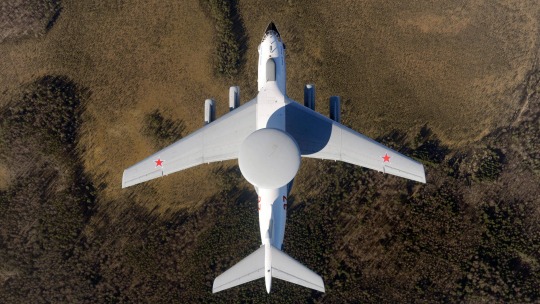
U.S. Army Officer Confirms Russian A-50 Radar Jet Was Shot Down With Patriot Missile
The U.S. Army colonel described how Ukrainian Patriot operators staged a “SAMbush” to bring down the A-50 in January of this year.
Thomas NewdickPUBLISHED Jun 10, 2024 6:55 PM EDT
The Beriev A-50U ‘Mainstay’ airborne warning and control system (AWACS) aircraft based on the Ilyushin Il-76 transport aircraft belonging to Russian Air Force in the air. ‘U’ designation stands for extended range and advanced digital radio systems. This aircraft was named after Sergey Atayants – Beriev’s chief designer. (Photo by: aviation-images.com/Universal Images Group via Getty Images).

A U.S.-made Patriot air defense system was responsible for shooting down a Russian A-50 Mainstay airborne early warning and control (AEW&C) aircraft over the Sea of Azov on January 14, according to a U.S. Army officer. The high-value aircraft, one of only a handful immediately available to Russia, was the first of two brought down in the space of five weeks. Previously, a Ukrainian official confirmed to TWZ that the second A-50 was brought down by a Soviet-era S-200 (SA-5 Gammon) long-range surface-to-air missile.
Speaking on a panel at the United States Field Artillery Association’s Fires Symposium 2024 last week, Col. Rosanna Clemente, Assistant Chief of Staff at the 10th Army Air and Missile Defense Command, confirmed that the first A-50 fell to a German-provided Patriot system, in what she described as a “SAMbush,” or surface-to-air missile ambush.
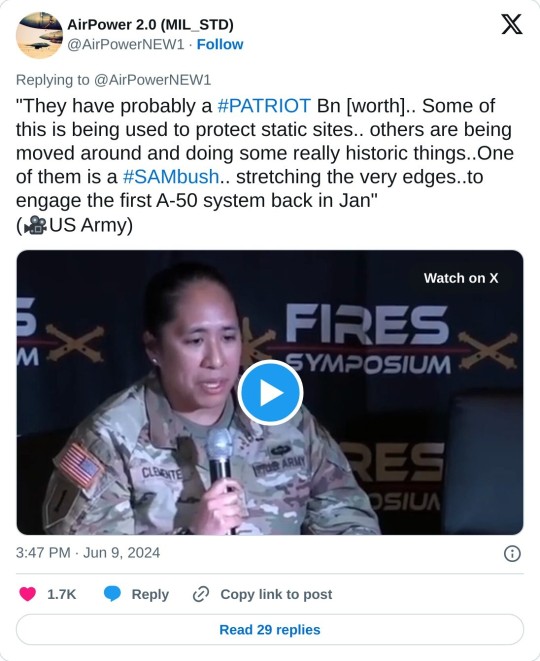
“They have probably about a battalion of Patriots operating in Ukraine right now,” Col. Clemente explained. “Some of it’s being used to protect static sites and critical national infrastructure. Others are being moved around and doing some really, really historic things that I’ve haven’t seen in 22 years of being an air defender, and one of them is a SAMbush … they’re doing that with extremely mobile Patriot systems that were donated by the Germans, because the systems are all mounted on the trucks. So they’re moving around and they’re using these types of systems, bringing them close to the plot … and stretching the very, very edges of the kinematic capabilities of that system to engage the first A-50 C2 [command and control] system back in January.”
Fifteen crew members were reportedly killed aboard the A-50.
Col. Clemente also provided some other interesting details of how the Ukrainians worked up their capabilities with these particular systems, which included a period of validation training involving the U.S. Army in Poland in April 2023.

Elements of a German Patriot air defense system stand on a snow-covered field in Miaczyn, southeastern Poland, in April 2023. Photo by Sebastian Kahnert/picture alliance via Getty Images
According to Col. Clemente, the German soldiers tasked with training the Ukrainians on the mobile Patriot systems woke up the Ukrainian battery in the middle of the night, marched them to a location where they fought a simulated air battle, and then made them march again. “I was like, ‘Huh, wonder why they did that?’ And it was a month later, they conducted some of their first ambushes where they’re shooting down Russian Su-27s along the Russian border.”
As we reported at the time, the use of Patriot to engage the radar plane over the Sea of Azov seemed likely, especially as it followed the pattern of an anti-access counter-air campaign that Ukraine was already waging against Russian military aircraft using the same air defense system.
Accordingly, in May 2023, Ukraine began pushing forward Patriot batteries to reach deep into Russian-controlled airspace. Most dramatically, a string of Russian aircraft was downed over Russian territory that borders northeastern Ukraine. Among them may have been the Su-27s (or perhaps another Flanker-variant aircraft) that Col. Clemente mentioned.
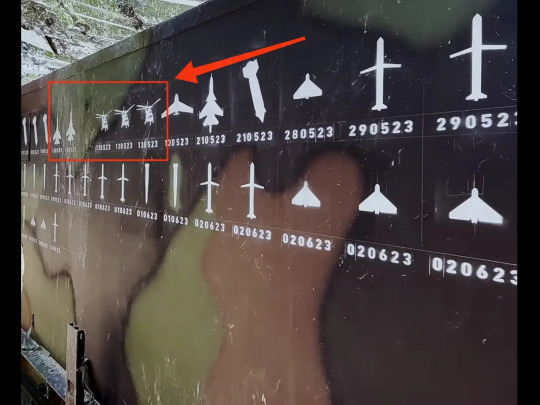
A screen capture from a Ukrainian Air Force video shows images of three Russian helicopters and two Russian fighters painted on the side of a Patriot air defense system. The three helicopter and two jet images bear the date May 13, 2023. Defense Industry of Ukraine
While the use of German-supplied weapons within Russian territory previously led to friction between Berlin and Kyiv, German officials more recently approved the use of Patriot to target aircraft in Russian airspace.
In December 2023, similar tactics were used against tactical jets flying over the northwestern Black Sea.
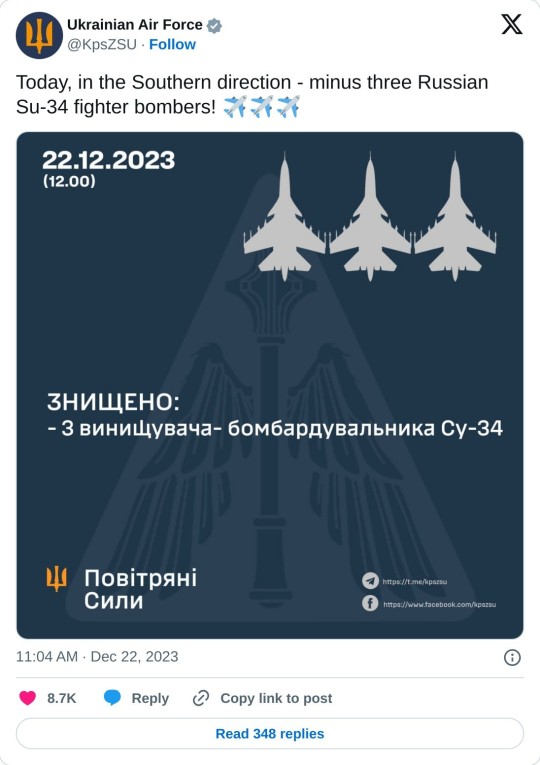
These kinds of highly mobile operations were then further proven with the destruction of the first A-50, on the night of January 14.

A Russian Il-22M radio-relay aircraft was also apparently engaged by Ukrainian air defenses the same night, confirmed by photo evidence of the aircraft after it had made it back to a Russian air base. It’s not clear whether the Patriot system was also responsible for inflicting damage on this aircraft, but it’s certainly a probable explanation.
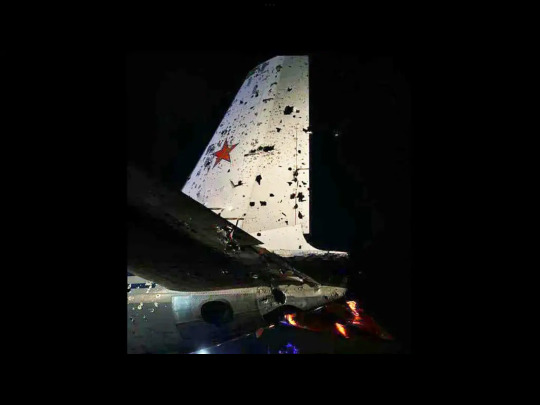
A photo of the Il-22M which purportedly made an emergency landing in Anapa, in the Krasnodar region of western Russia. via X
Both incidents appear to have taken place in the western part of the Azov Sea and, as we discussed at the time, the distances involved suggested that, if Patriot was used, it was likely at the very limits of its engagement envelope.
Based on Col. Clemente’s account, it seems likely that the Patriot system in question was not only being pushed to the limits of its capabilities but was likely being deployed very far forward in an especially bold tactical move.
As we wrote at the time: “Considering risking a Patriot system or even a remote launcher right at the front is unlikely, and these airborne assets were likely orbiting at least some ways out over the water, this shot was more likely to have been around 100 miles, give or take a couple dozen miles.”
Of course, all this also depends on exactly where the targeted aircraft were at the time of the engagement.
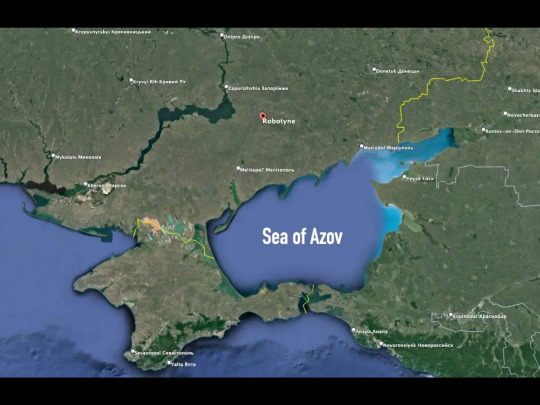
A map showing the Sea of Azov as well as Robotyne, which is really the closest Ukraine regularly operates to that body of water, a distance of roughly 55 miles. Google Earth
Once again, the A-50 shootdown may be the most important single victory achieved so far by Ukrainian-operated Patriot systems, but it was part of a highly targeted campaign waged against the Russian Aerospace Forces which has seemingly included multiple long-range downings of tactical aircraft.
The Ukrainian tactics first found success in pushing back Russian airpower and degrading its ability to launch direct attacks and even those using standoff glide bombs, which have wreaked havoc on Ukrainian towns.
The same anti-access tactics extended to Russia’s small yet vital AEW&C fleet have arguably had an even greater effect. After all, these aircraft offer a unique look-down air picture that extends deep into Ukrainian-controlled territory. As well as spotting incoming cruise missile and drone attacks, and low-flying fighter sorties, they provide command and control and situational awareness for Russian fighters and air defense batteries. According to Ukrainian officials, the radar planes are also used to direct Russian cruise missile and drone strikes.
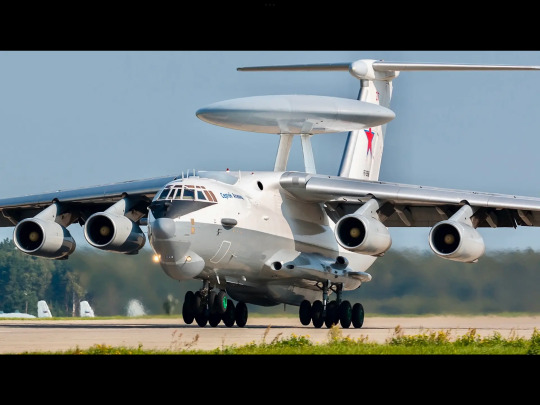
Dmitry Terekhov/Wikimedia Commons
The importance of these force-multipliers has seen earlier efforts to disable them, with A-50s in Belarus having been targeted by forces allied with Ukraine.
The recent appearance of a photo showing a Ukrainian S-300PS (SA-10 Grumble) air defense system marked with an A-50 symbol also indicates that previous attempts were made to bring these aircraft down using this Soviet-era surface-to-air missile, too.
With all this in mind, it’s not surprising that Ukraine’s highly valued, long-reaching Patriot air defense system was tasked against the A-50.
In demonstrating the vulnerability of Russian aircraft patrolling over the Sea of Azov, the January 15 shootdown might have been expected to push these assets back. That may have happened, but another example was then shot down at an even greater distance from the front line, on February 23. The fact that the second A-50 came down over the Krasnodar region fueled speculation that it may have been a ‘friendly fire’ incident.
However, Lt. Gen. Kyrylo Budanov, the head of the Ukrainian Ministry of Defense’s Main Directorate of Intelligence (GUR), subsequently confirmed to TWZ that the second A-50 — as well as a Tu-22M3 Backfire bomber, in a separate incident — were brought down by the Soviet-era S-200 long-range surface-to-air missile system.
Undoubtedly, there are more details still to emerge about the shootdowns of the two A-50s, not to mention other engagements that the Ukrainian Patriot has been involved in.
However, Col. Rosanna Clemente’s comments confirm that the Ukrainian Air Force is using these critical systems in a sometimes-daring manner, using limited numbers of assets not only to protect key static infrastructure but also to maraud closer to the front lines and bring down high-profile Russian aerial targets. Not only does this force Russia to adapt its airpower tactics for its own survival, reducing its effectiveness, but it also provides another means for Ukraine to fight back against numerical odds that are stacked against it.
Contact the author: [email protected]
18 notes
·
View notes
Text

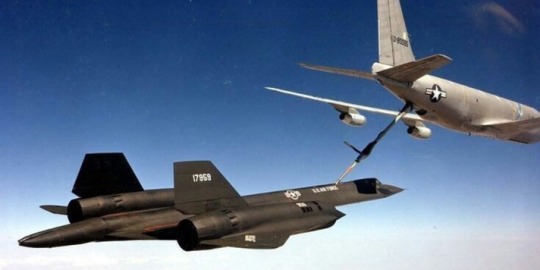
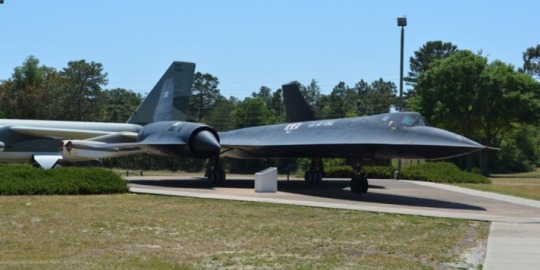

Big Tail SR-71
I thought it was ugly. It's like a bumblebee with too big of a stinger. Reading Paul Crickmore‘s book “Beyond the secret missions, the Missing Chapters. The real reason Big Tail wasn’t pursued further was the intercept capabilities of the SA-5 (4 solid-fueled strap-on rocket boosters launch the SA-5 Gammon missile) were less of a threat to the SR 71 than had been anticipated.
#959 came off the assembly line like any other SR-71 when rolled out on Aug. 16, 1965. It was chosen as the platform for a new set of sensor equipment to be carried in a nine-foot extension from the rear of the aircraft in 1975.
When the SRs went operational during the Vietnam War, some Missions were canceled due to weather conditions. This led to the experimental testing of the additional camera. In 1974, the Air Force identified a requirement for an aft-facing Electronic Countermeasures (ECM) capability for the SR-71, and several feasibility studies examined by the Air Force included conformal packages underneath the aft fuselage and belly pods, as well as an extended tail fairing. After researching all the possibilities, the extended tail appeared to be the most viable option based on the lowest cost, added volume, and least amount of aerodynamic drag.
The new ‘Big Tail’ assembly would be 13 feet 9 inches long and weigh 1,273 lbs. with 49 cubic feet of space to carry 864 lbs. of payload. The primary payload would consist of an aft-facing ECM and the 24-inch Optical Bar Camera. [According to Habu.org] because of the lengthened tail section, the new assembly would also have to be articulated to move 8.5 degrees upward to clear the runway during take-off and landing and then downward so it would not interfere with the aircraft’s drag chute deployment on rollout.
On Dec. 3, 1975, the “Big Tail” flew for the first time. The tests demonstrated little performance loss, but the new sensor equipment proved little advantage. The program was dropped, and this aircraft was last flown on Oct. 29, 1976, and is the only “Big Tail” in existence. Although Big Tail had proven to be a viable system operationally, the Air Force chose not to pursue the concept further. After only 36 flights with the extended tail, # 959 made its last flight on Oct. 29, 1976. You can find BIG TAIL at Eglin, Air Force Base, Florida.
Written by Linda Sheffield
@Habubrats71 via X
13 notes
·
View notes
Text

👆 sent out a NOTAM ( notice to Airmen) on May 19, 1977, the day before the first planned flight near the border of the Soviet Union.
The message stated their intention to test-fire a missile up to an altitude of 100,000 feet.!
The coordinates into which the missile was to test fire happen to be precisely the same bracket the SR 71 intended as a point of ingress and egress to/from the Barents Sea.
Phone calls were quickly made to and from the United States and Great Britain.
Kelly Johnson, the designer of the SR 71, had expressed his reservations about going ahead with the mission.
JT Vida and Tom Alison had been selected for this mission. They had no concerns. Habu’s are confident men because they know the facts and they know what their airplane can do.
The mission went on as scheduled on May 20, 1977. It was coordinated with an RC 135V rivet joint electronic intelligence aircraft and proved outstanding. The results with both platforms were, capturing the radio, frequency, and signal associated with the Soviet SA-5 Gammon surface-to-air missile ( SAM )
Tom Alison, pilot, and JT Vida, RSO in the SR 71, 958, exited the collection area without the attention of a SAM.
Alison recalled, “JT and I had spent 45 minutes in the “denied area” specified by the N0TAM. Flying at a little over Mach 3. Allison said, “It was just another day at the office!”
I look forward to Paul Crickmore’s new book on November 21, 2023. Lockheed Blackbird
Beyond the Secret Missions – The Missing Chapters
The Smithsonian Institute at Udvar-Hazy Center, Located in Chantilly, Virginia, has the SR 71 #972 that flew across America from Los Angeles to Washington DC in 64 minutes. It also has a JT Vida (he tragically died of cancer in 1992 ) pressure suit. Nearby, you can find Tom Alison’s flight suit. Tom went on to be Director of Collections for the Smithsonian.
Post by Linda Sheffield Miller
3 notes
·
View notes
Text
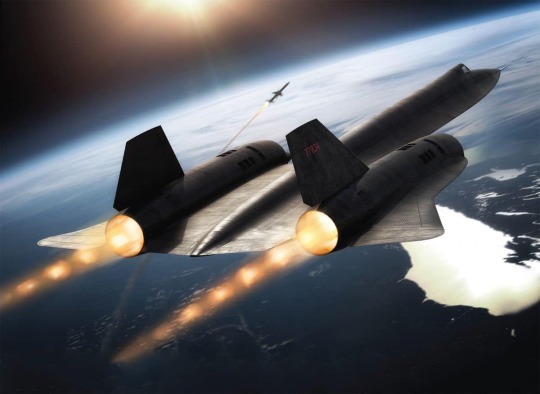
Read the Silver Star Recommendation for the SR-71 crew who flew their Blackbird at her fastest speed, at night, carrying an NSA ELINT recorder to collect SA-5 SAM radar signal
By Dario Leone
Apr 7 2021
SHARE THIS ARTICLE
The SR-71 night time flight performance restrictions were lifted so the flight could be flown at max Mach (3.2) and turns made at max bank of 35 degrees instead of the normal 25-degrees.
The following story comes from former SR-71 Blackbird Reconnaissance Systems Officer (RSO) Colonel Richard Sheffield’s unpublished book.
As Linda Sheffield Miller, who is Colonel Sheffield’s daughter and who also runs the awesome Facebook Page Habubrats (CLICK HERE to check it out), explained to The Aviation Geek Club, what makes this post even more interesting is that it was written by Colonel Hal Confer, 9th Strategic Reconnaissance Wing (SRW) Commander 1970-1972, while he was recommending that Colonels Robert Spencer and Richard Sheffield got the Silver Star for their effort during a risky mission flown in the skies over Vladivostok. But, as Linda Sheffield Miller explained us, Confer couldn’t put the recommendation in because it was a highly classified sortie and only a few people knew about it.
Vladivostok, September 27, 1971, SR-71, #980
In 1971, Colonels Robert (Bob) Spencer and Richard (Butch) Sheffield flew one of the most important combat missions of the Cold War.
Background:
The Soviet Union had developed and deployed throughout the USSR a radar and missile system called the SA-5. It was designed to intercept and destroy overflying US bombers and fighters. The Soviet Union had gone to extreme measures to keep secret the parameters of the SA-5 radar frequencies.
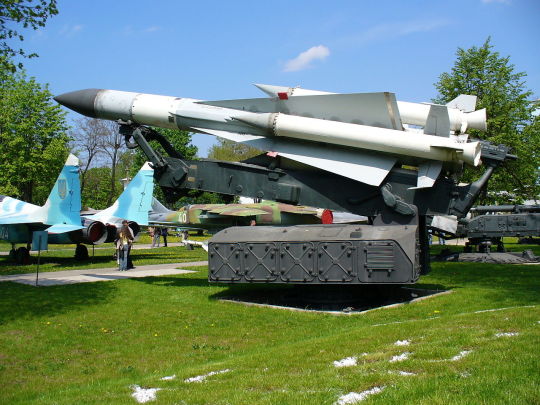
SA-5 Gammon
The deployment of the SA-5 presented a considerable degradation to the US bomber forces ability to successfully strike the Soviet Union. Consequently, obtaining the SA-5 radar profile was one of the National intelligence community’s highest priorities.
The Soviets were very sensitive to any SR-71 flight activities on or near their borders; it was decided to use the SR-71 to bait the Soviets into exposing their SA-5 system. A special ELINT recorder was designed by NSA to be carried on the SR-71 to collect the SA-5 radar signal.
The mission tactics were to surprise the SA-5 missile site at the port city of Vladivostok. The SR-71 would make a direct approach as though intending to overfly the Soviet fortification. The mission would be flown late at night, when the least experienced personnel would be manning the missile site. The SR-71 night time flight performance restrictions were lifted so the flight could be flown at max Mach (3.2) and turns made at max bank of 35 degrees instead of the normal 25-degrees.
The exigencies of the mission were: (1) to fly the SR-71 faster at night than it had previously been flown; (2) to fly well within effective range of the Soviet Union’s most capable surface-to-air missile system without the SR-71 having either a missile warning or defense system available; and (3) to use a steeper bank angle than any prior night flights. Both the speed and bank angle had never been attempt before by anyone at night.
The potential results of the mission were so crucial to our wartime retaliatory capability that the order to execute the flight was initiated at the highest level of the National command authority (the President).
It followed that the most senior and experienced crewmembers would be selected to fly the mission, and that was the crew of Colonels Spencer and Sheffield. During the mission both the skill and experience of the crew were relied on heavily for its successful completion.
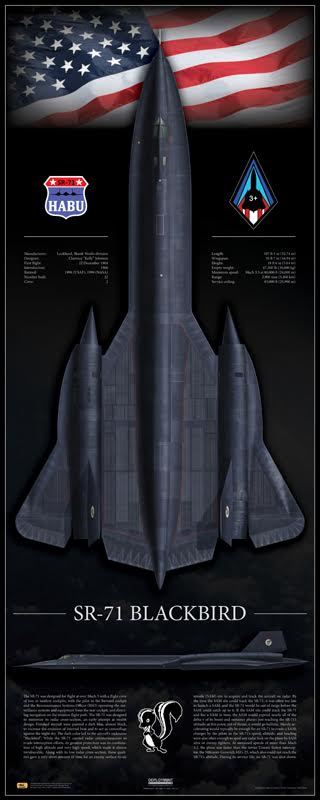
SR-71 print
This print is available in multiple sizes from AircraftProfilePrints.com – CLICK HERE TO GET YOURS. SR-71A Blackbird 61-7972 “Skunkworks”
2 notes
·
View notes
Text
Syria attempted to shoot down Turkish F-16 fighter aircraft
Syrian S-200 (NATO reporting name SA-5 Gammon) long-range, medium-to-high altitude air defense system fired a missile – but missed – at a Turkish F-16 fighter aircraft.
According to Yusha Yuseef of Muraselon News, Syrian armed forces attempted to shoot down a Turkish fighter aircraft that was participated in an airstrike in Idlib, a de-escalation zone in northwestern Syria.
A missile launce was detected in flight by sensors onboard the F-16, after them Turkish fighters evaded the missile and returned safely to its airspace.
It is worth recalling that on Sunday, Turkish Air Force F-16 jet fighters shot down two Syrian Air Force Su-24MK2 bombers over Idlib province. The air battle is the latest clash in a mounting conflict between the Turkish military and forces supporting the regime of Bashar-al-Assad for control of the last major rebel stronghold in Syria.
Also on 3 March, Turkish F-16 jet downed an Assad regime L-39 aircraft in Syria’s northwestern Idlib province near Maarat al-Numan.
Turkey launched Operation Spring Shield after at least 34 Turkish soldiers were killed and dozens injured in an Assad regime airstrike in Idlib, a de-escalation zone in northwestern Syria, just across Turkey’s southern border. Turkey’s only target during the operation were Assad regime troops and equipment in Idlib under the nation’s right to self-defense, stressed Akar.
Turkish soldiers were killed while working to protect local civilians under a September 2018 deal with Russia, which prohibits acts of aggression in Idlib.
from Defence Blog
Syrian S-200 (NATO reporting name SA-5 Gammon) long-range, medium-to-high altitude air defense system fired a missile – but missed – at a Turkish F-16 fighter aircraft.
According to Yusha Yuseef of Muraselon News, Syrian armed forces attempted to shoot down a Turkish fighter aircraft that was participated in an airstrike in Idlib, a de-escalation zone in northwestern Syria.
A missile launce was detected in flight by sensors onboard the F-16, after them Turkish fighters evaded the missile and returned safely to its airspace.
It is worth recalling that on Sunday, Turkish Air Force F-16 jet fighters shot down two Syrian Air Force Su-24MK2 bombers over Idlib province. The air battle is the latest clash in a mounting conflict between the Turkish military and forces supporting the regime of Bashar-al-Assad for control of the last major rebel stronghold in Syria.
Also on 3 March, Turkish F-16 jet downed an Assad regime L-39 aircraft in Syria’s northwestern Idlib province near Maarat al-Numan.
Turkey launched Operation Spring Shield after at least 34 Turkish soldiers were killed and dozens injured in an Assad regime airstrike in Idlib, a de-escalation zone in northwestern Syria, just across Turkey’s southern border. Turkey’s only target during the operation were Assad regime troops and equipment in Idlib under the nation’s right to self-defense, stressed Akar.
Turkish soldiers were killed while working to protect local civilians under a September 2018 deal with Russia, which prohibits acts of aggression in Idlib.
via IFTTT
0 notes